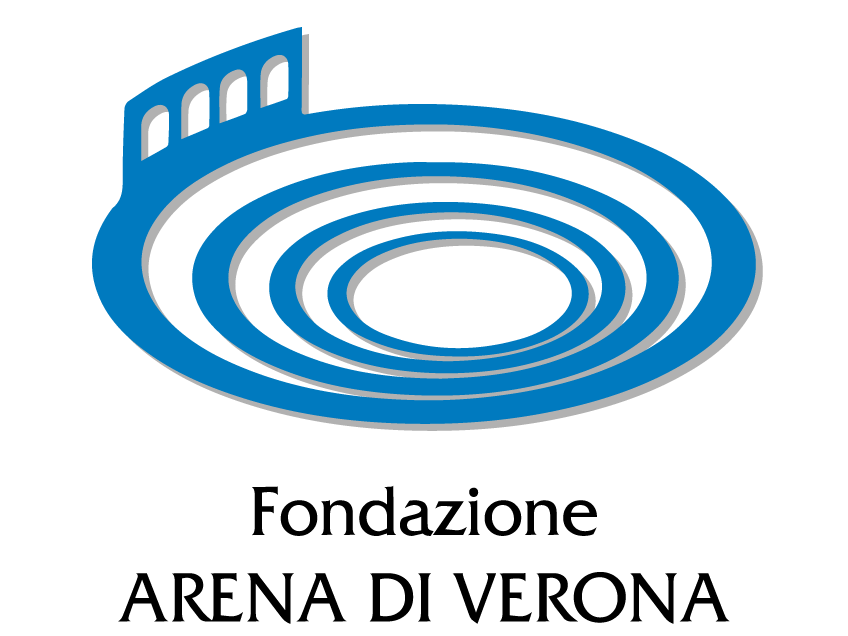

Legend
This is the accessible program booklet for La Traviata by Giuseppe Verdi. It contains 14 pages, which can be browsed both forward and backward.
It provides audio versions of the texts, audio descriptions, and videos in ISL, International Sign Language. The texts can be easily zoomed in and out, and the contrast of the display can be increased.
The “Audio text” button plays the audio of the texts read by a male voice while the “Audio description button plays the audio descriptions of the pictures read by a female voice. The “ISL” button plays videos in International Sign Language.
By using this accessible program booklet, you give explicit consent to accessing content hosted on third party websites.
La Traviata
by Giuseppe Verdi
Opera in three acts.
Libretto by
Francesco Maria Piave
Characters
Violetta Valéry [soprano] Flora Bervoix, friend of Violetta [mezzo-soprano] Annina, Violetta's maid [mezzo-soprano] Alfredo Germont [tenor] Giorgio Germont, father of Alfredo [baritone] Gastone, Visconte di Letorières [tenor] Barone Douphol [baritone] Marchese d'Obigny [bass] Doctor Grenvil [bass] Giuseppe, Violetta's servant [tenor] Flora’s servant/Commissioner [bass]Violetta’s and Flora’s male and female friends, matadors, picadors, gypsies, Violetta’s and Flora’s servants, and masked performers
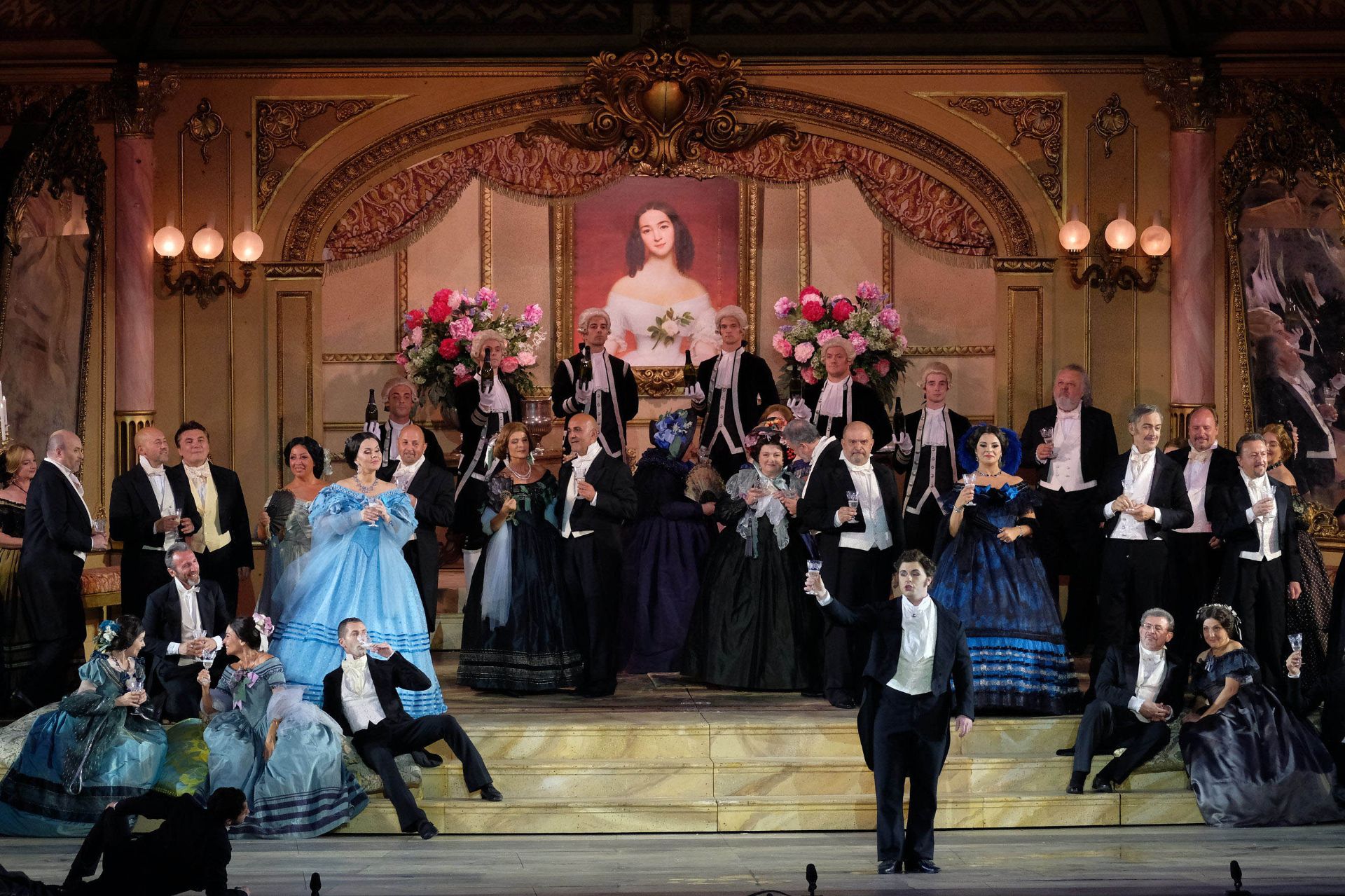
Act I
Alfredo, Violetta and some of the guests at the party held at Violetta’s house.
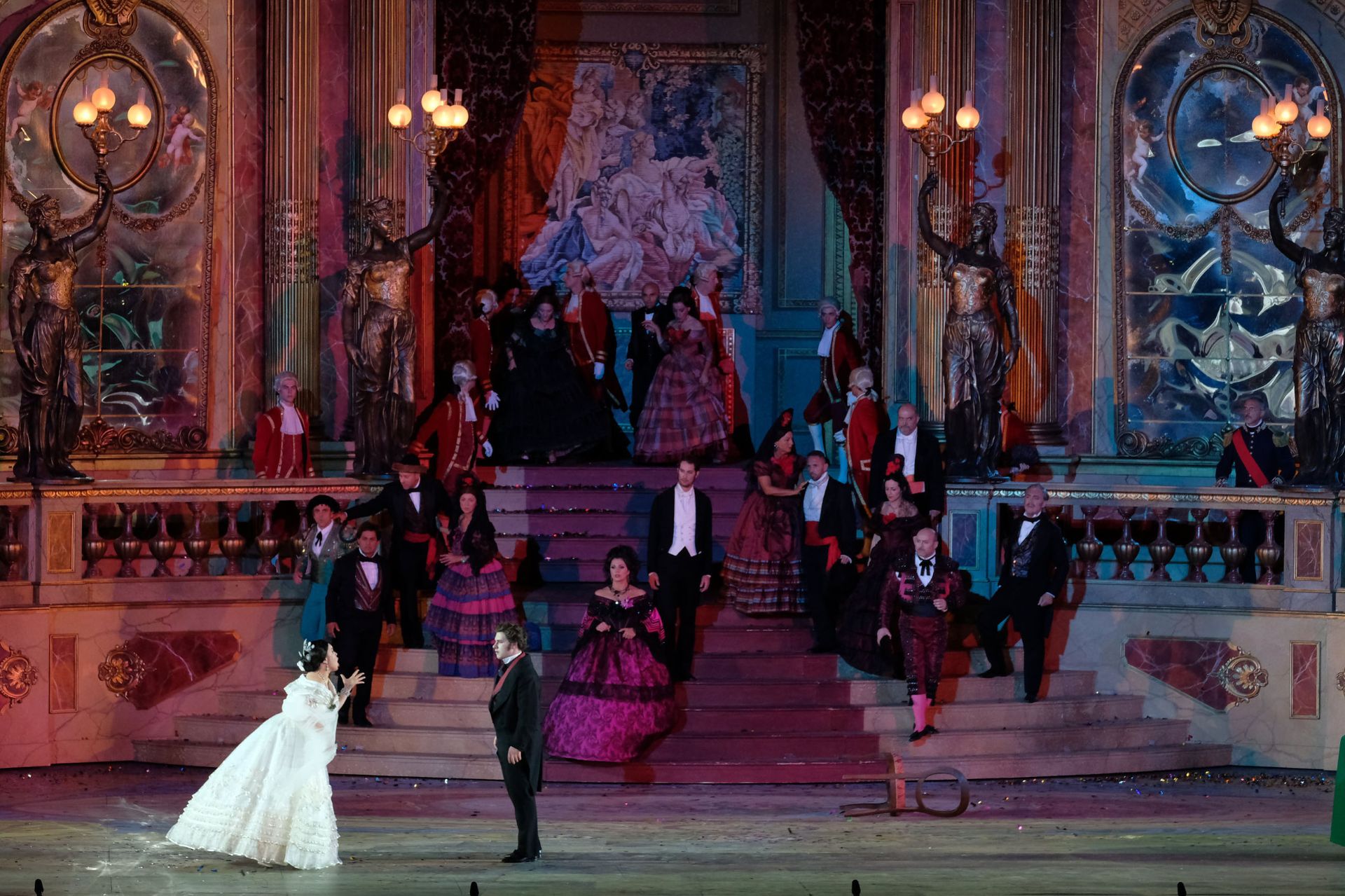
Act II
Violetta, Alfredo, and some of guests at the party at Flora’s house, along with some matadors
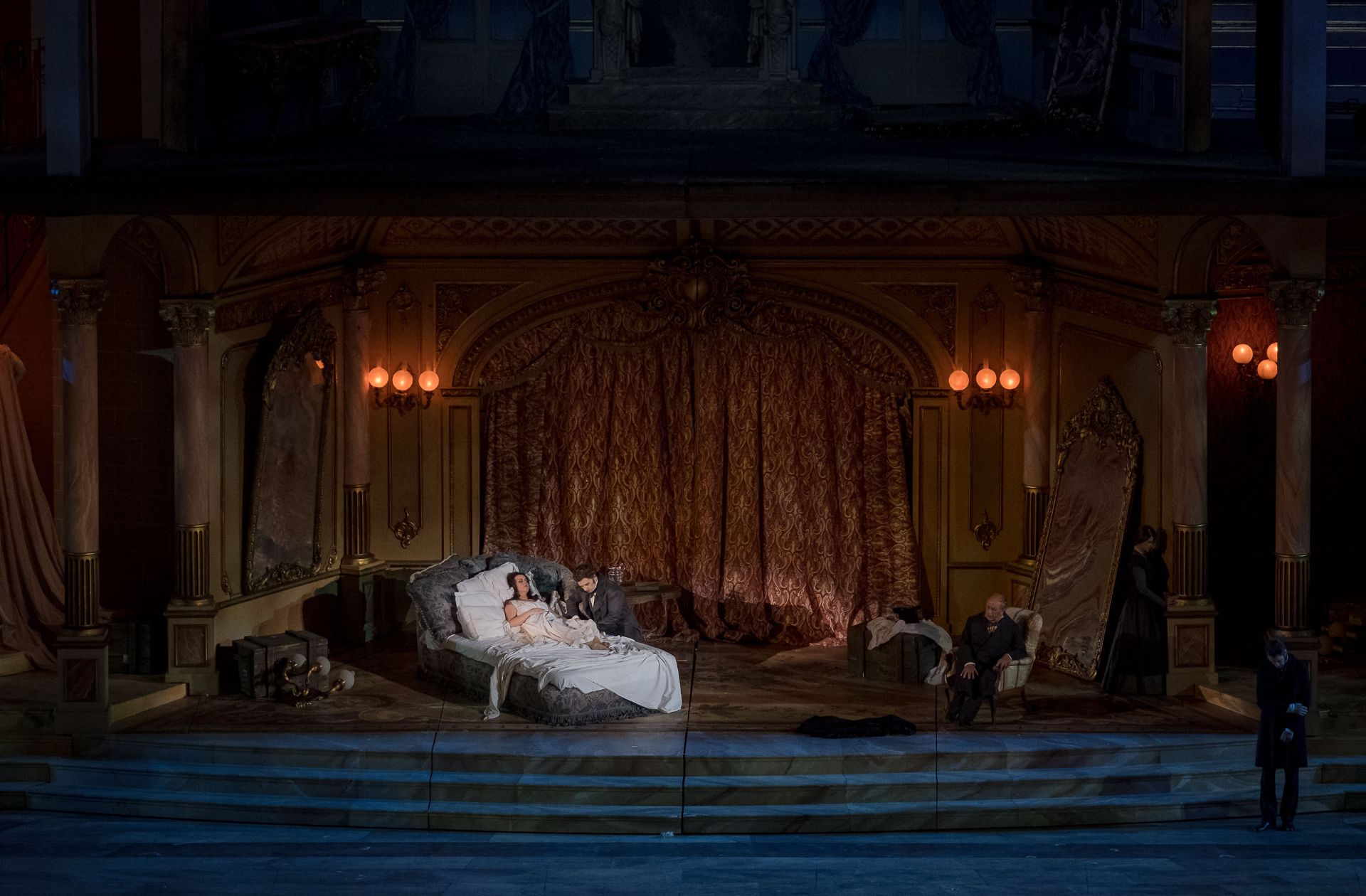
Act III
Violetta, Alfredo, Giorgio Germont, Annina and the doctor in Violetta’s bedroom.

Violetta, Alfredo and some of Violetta’s friends
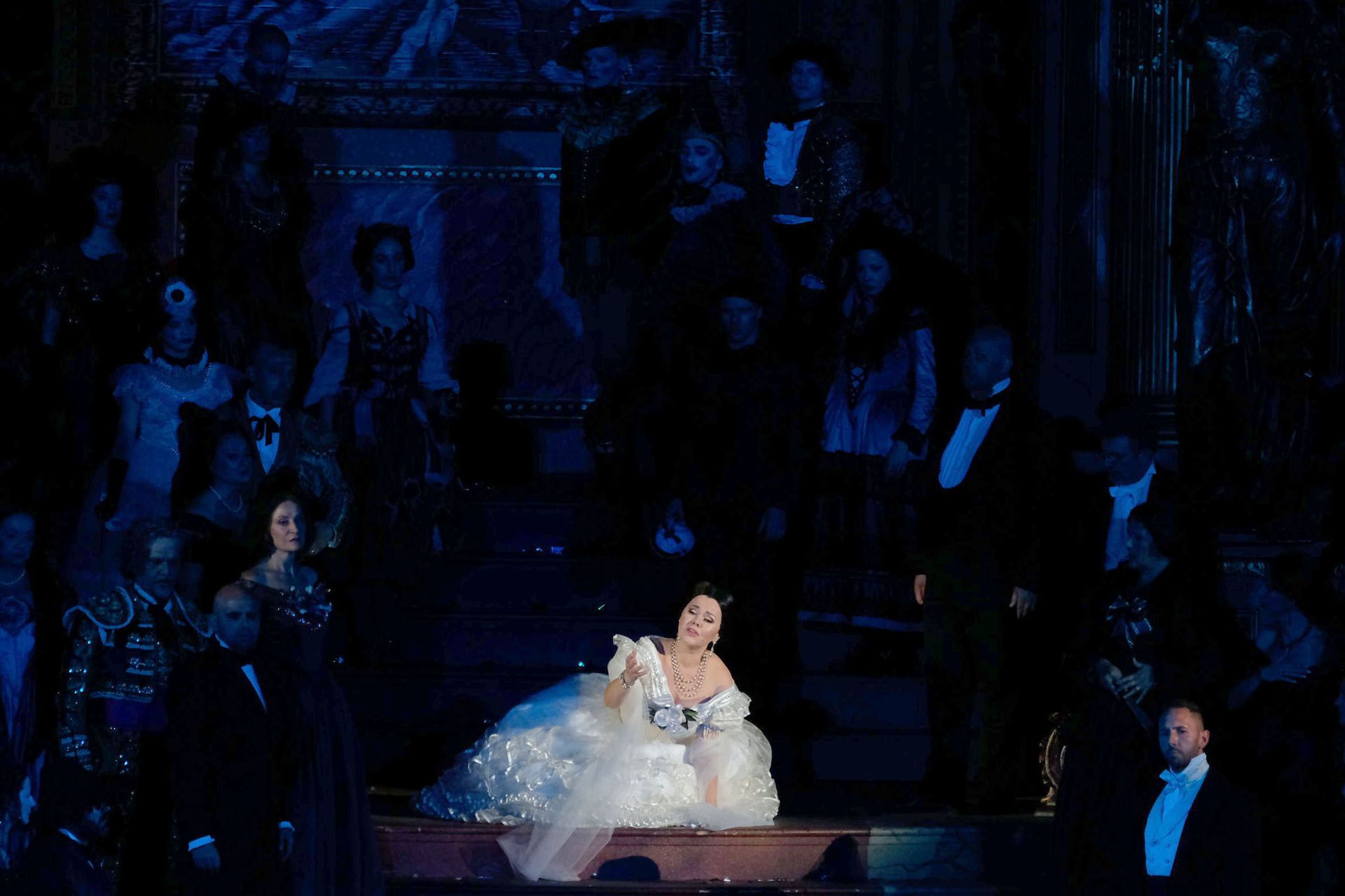
Violetta.
Director’s Notes.
Franco Zeffirelli, born in Florence one hundred years ago, passed away in June 2019, six days before being able to see his last creation inaugurate the Arena di Verona Opera Festival.
Zeffirelli was very attached to La Traviata. After his first encounter in 1958, in Dallas, with Maria Callas in the role of Violetta, he directed the opera nine times all over the world, including an adaptation for the big screen.
This production by the renowned director and scenographer, with the collaboration of costume designer Maurizio Millenotti, casts Paris of the middle of the nineteenth century as the symbol of an epoch and its style. It is the triumph of the upper middle class and of the nobility of the period, with its gilding, stuccoes, mirrors, champagne, and sofas.
In the words of Zeffirelli, “La Traviata recounts a story that could take place in any period, at any time in our lives, and this is its strength”. And more, “Violetta is the perfect representation of a woman of today and of always”.
The production is based on a huge “scene box” that makes it possible to have scenes on multiple levels. They are shown to and hidden from the audience through the movement of a colossal curtain mounted on a platform. Two proscenium loggias support it. When they rotate, they change the scene. This grandiose solution has an incredible impact.
Beyond the inevitably spectacular scenography and scene changes, Zeffirelli, the master of theater, recounts for the last time the story of Violetta. With keen intuition, he starts from the very end, with the disease that is anticipated in Verdi’s prelude and in the pages that open the beloved and inspiring The Lady of the Camellias by Dumas.
Synopsis
ACT I
Violetta Valéry is hosting a party in her luxurious apartment in Paris. She is a high-class courtesan under the protection of baron Douphol. She is introduced to an admirer, Alfredo Germont. Overcoming his initial awkwardness, the young man makes a toast to her and asks her to dance, but Violetta grows ill. She suffers from consumption, and beyond the disease itself, she harbors her own inner turmoil that detaches her from the superficiality of the party. Alfredo intuitively understands her state of mind and confesses that he has secretly been in love with her for a year. She is moved. At first, she rejects him but then gives him a flower, inviting him to return the next day. After the guests have left, Violetta contemplates the nature of her feelings.
ACT II
Six months later, Violetta and Alfredo are living together in a country house outside of Paris. The couple seem happy, but Violetta receives a visit from Alfredo’s father. He begs her to leave his son because the scandal of their love affair is jeopardizing his daughter’s betrothal. In the end, Violetta decides to sacrifice her own happiness and writes Alfredo a goodbye letter. Shortly thereafter, Alfredo reads the letter in which Violetta tells him that she is going to return to her life as a courtesan. Tormented by jealousy and resentment, Alfredo rushes off to find Violetta and avenge himself. That very evening, a party is being thrown at Flora Bervoix’s house. Alfredo arrives while some of the guests are playing cards. Violetta arrives as well, accompanied by Douphol. Alfredo loses control and throws his gambling winnings at Violetta. Then, filled with remorse, he is led away by his father after being challenged to a duel by Douphol.
ACT III
Violetta is in her bedroom, sick, a month later. Her death is at hand as doctor Grenvil confirms to Annina. Violetta is left with nothing more than simple everyday gestures, including rereading her letters. The one she dwells upon the most is the letter in which Giorgio Germont informs her that he told the truth to his son, who fled abroad after wounding the baron in the duel. Now, Alfredo is returning to Paris to see her and beg her forgiveness. When Alfredo returns, the two lovers exchange words of love and forgiveness, but now she is too weak even to stand. The arrival of Giorgio Germont, ready to accept Violetta as his daughter, and Alfredo’s words of passionate dedication are to no avail. Then after a final, fleeting sign of recovery, Violetta collapses lifeless.


Credits
Technical implementation: Tadao Agency.
Descriptions: Elena Di Giovanni, Francesca Raffi
Videos in ISL: Monika Nawrot
Voices: Marco Quaglia (texts); Giulia Heathfield Di Renzi (audio descriptions)
Disclaimer
Copyright in these pages is owned by Fondazione Arena di Verona except where otherwise indicated by a third party's proprietary notice. These pages and the material published on them are also protected by intellectual property laws and may not be reproduced or appropriated in any manner without written permission of their respective owners.
For more information, please contact commerciale@arenadiverona.it